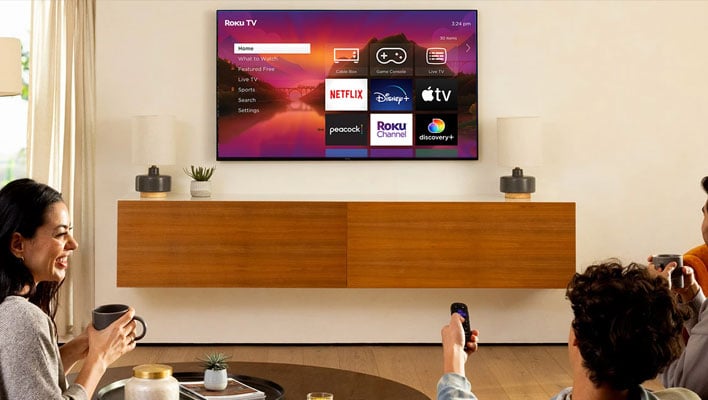Roku's 4K QLED And Mini LED Pro TVs Have An Ace Card To Take On The Big Players

Quick, what's the first brand you associate with premium TVs? Ping at least 10 people with that very question and the responses will likely be split between Sony, LG, and Samsung. Some might even mention TCL and Hisense, especially with their newer mini LED offerings making waves. Well, Roku is entering the chat. Maybe you already had Roku in the conversation but if not, its upcoming Pro Series TV could garner a more serious look at the brand.
Roku is already the top streaming platform in the US, a point it makes sure to mention in a press release celebrating its 10-year anniversary—Roku customers have collectively viewed 100 billion streaming hours on a trailing 12-month basis and averaged 3.9 streaming hours per active account (as of Q3 2023). In a separate release, Roku looks to bring more people into the streaming fold with a new line of Pro Series TVs, which it will offer in 75-inch, 65-inch, and 55-inch sizes.
We're only getting sparse details ahead of next week's Consumer Electronics Show (CES), but Roku is promising "exceptional picture quality and audio innovation" by way of 4K QLED and mini LED models with local dimming. It's also pitching a modernized design that enables the TVs to sit flush on the wall, which suggests the inputs will either be on the sides or bottom.

"Roku Pro Series’ picture and audio quality, polished design, unique features, and ease-of-use bring the market leadership and innovation that Roku is known for to a TV made for streaming," said Chris Larson, Vice President, Retail Strategy, Roku. "As we hit 10 years of the Roku TV program, we believe this new line of TVs will set a new standard for an elevated streaming experience."
We mentioned a possible ace card in the headline and that's in reference to Roku's Smart Picture tuning. Created by Roku's Picture Quality Tuning Team, this feature employs a combination of artificial intelligence, machine learning, and data collected from Roku's content partners to automatically fine tune the picture for optimal viewing.
This isn't unique to Roku, and pretty much all modern TVs at minimum come with preset picture settings for different types of viewing. In our experience, preset settings are rarely all that great. It's also a chore to change the preset and/or individual settings when bouncing around different types of content.
Roku could go a long way towards making its upcoming Pro Series TVs more attractive by tackling the latter, at least for the general public that doesn't care to tinker with the settings. However, it remains to be seen how calibrated and dialed-in Roku's premium TVs will be, especially compared to premium offerings from top-tier brands.
We'll know later this year—Roku's Pro Series TVs will be available in this spring with an optional mount starting at $1,500.


